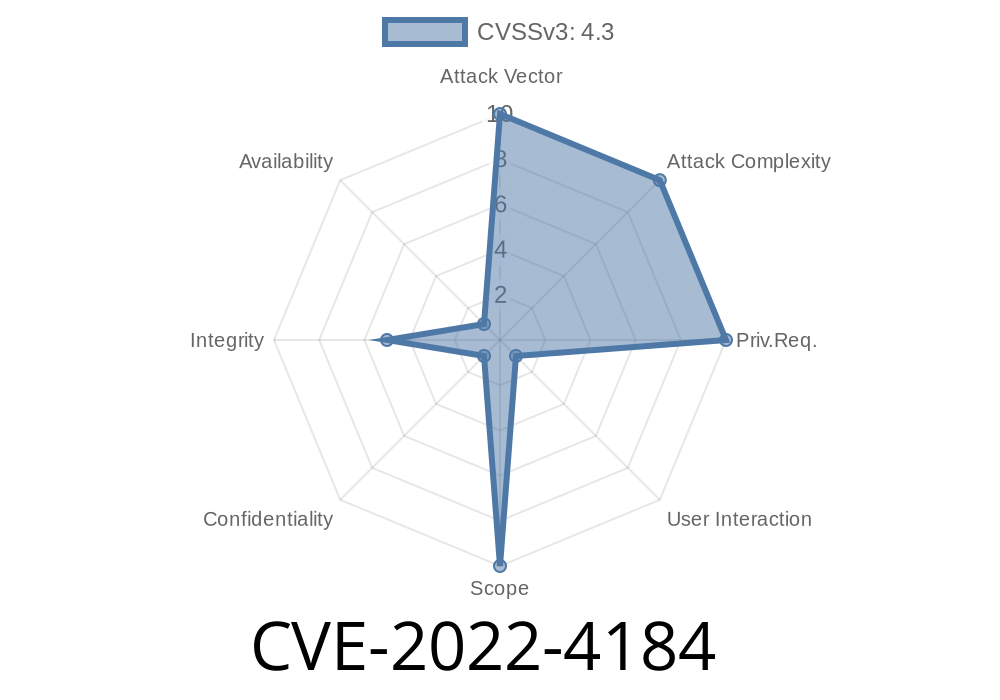In this extensive analysis, we will be discussing CVE-2022-4184, a security issue related to insufficient policy enforcement in Autofill in Google Chrome versions prior to 108..5359.71. The vulnerability allowed a remote attacker to bypass Autofill restrictions by using a crafted HTML page, making it easier to execute malicious tasks. Chromium's security team has labeled the severity of this issue as "Medium." In this post, we will cover the technical details of this vulnerability, provide example code snippets, and discuss how the exploit works, as well as necessary mitigation techniques.
Background
Autofill is a feature provided by Google Chrome that streamlines the process of filling out forms online, such as filling out shipping addresses, credit card information, and passwords. This functionality, though convenient, opens up the possibility for security vulnerabilities, especially if Chrome's Autofill policies are not adequately implemented. In the case of CVE-2022-4184, the insufficient policy enforcement allowed a remote attacker to exploit these vulnerabilities and bypass restrictions set in place to protect users' data.
Technical Details
To better understand this vulnerability, let's take a look at how the exploit could have been carried out using a crafted HTML page. The attacker would create an HTML page containing various input elements designed to trigger Chrome's Autofill functionality. In this example, we'll consider an HTML page that has been crafted to include fields for email, password, and address information:
<form>
<label>Email:</label>
<input type="email" id="email" autocomplete="email">
<label>Password:</label>
<input type="password" id="password" autocomplete="new-password">
<label>Address:</label>
<input type="text" id="address" autocomplete="address-line1">
<button type="submit">Submit</button>
</form>
In a secure implementation, Chrome should only AutoFill the information that the user has allowed to be automatically filled in. However, the vulnerability in question allowed the attacker to bypass these restrictions, receiving auto-filled information that the user did not intend to share.
Exploit Details
Now that we understand the technical aspects of CVE-2022-4184, let's take a closer look at how an attacker would exploit it. In essence, the attacker would create a crafted HTML page just like the one above and trick the user into opening it. This could be done through various means, such as sending a phishing email with a link to the crafted page or embedding the harmful content within a legitimate website.
Once the victim opens the malicious page, the attacker can use JavaScript to trigger the Autofill process, even if Chrome's policies would typically disallow it:
document.getElementById('email').focus();
document.getElementById('email').dispatchEvent(new Event('input'));
In this code snippet, the attacker triggers the focusing on the email input field and then dispatches an "input" event, simulating user interaction. This causes Chrome to AutoFill the email input despite the user not having explicitly triggered the action.
Mitigation Measures
To safeguard against the CVE-2022-4184 vulnerability, it is essential to keep Google Chrome up to date. Users should update their browsers to the latest version (108..5359.71 or later) to ensure that they are protected from this specific security issue.
For developers, it's always crucial to follow best practices when handling user inputs and always stay up-to-date on browser security patches.
Conclusion
In this long read, we have dug deep into the details of CVE-2022-4184, a security vulnerability affecting Autofill in Google Chrome. By understanding how this exploit worked, browser users and developers can better protect themselves and their applications from potential attacks. Always keep your software updated and follow secure development best practices to minimize the risks posed by vulnerabilities like CVE-2022-4184.
Original References
1. Chromium Security Release Notes
2. Chromium Bug Tracker
Timeline
Published on: 11/30/2022 00:15:00 UTC
Last modified on: 05/03/2023 12:16:00 UTC
